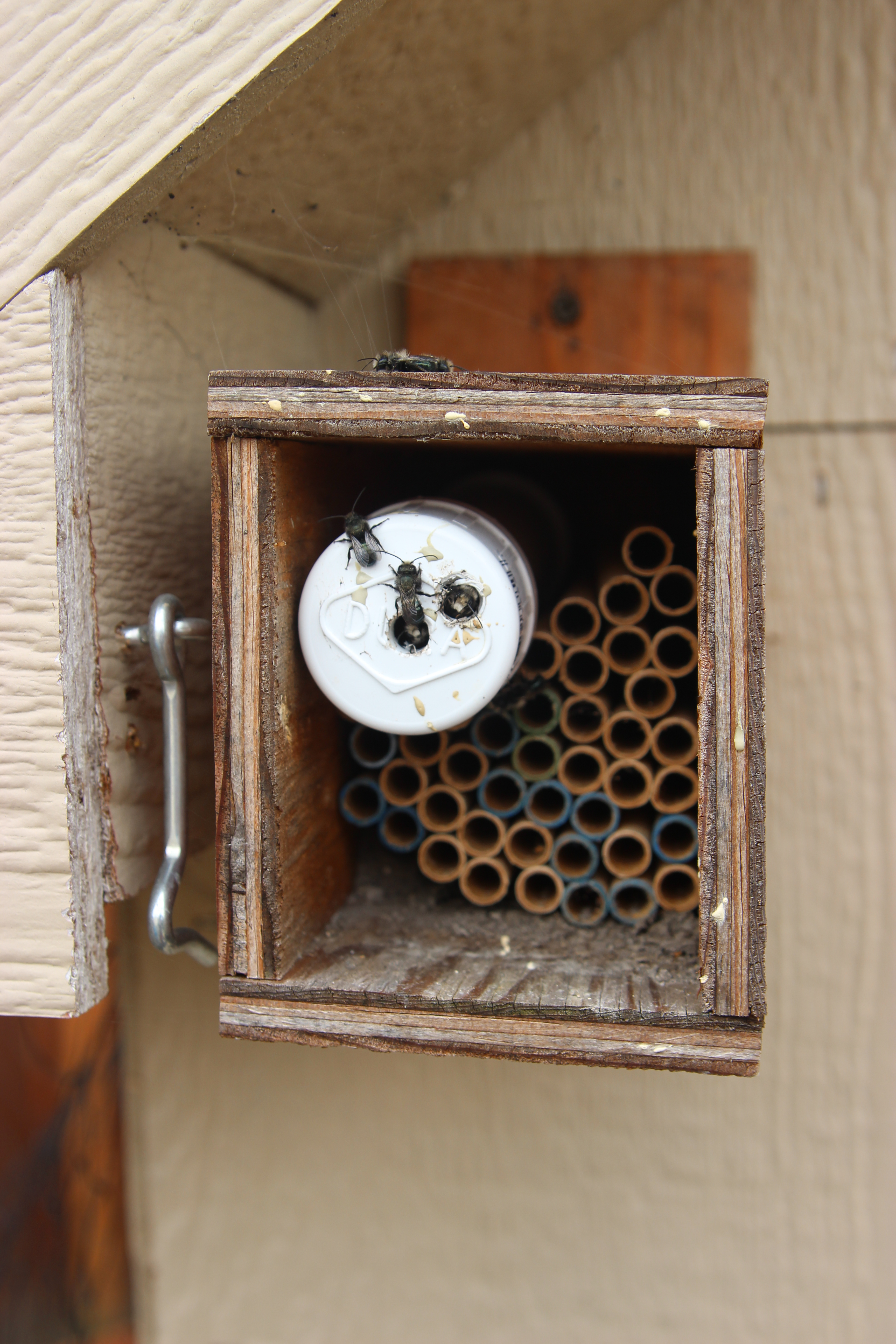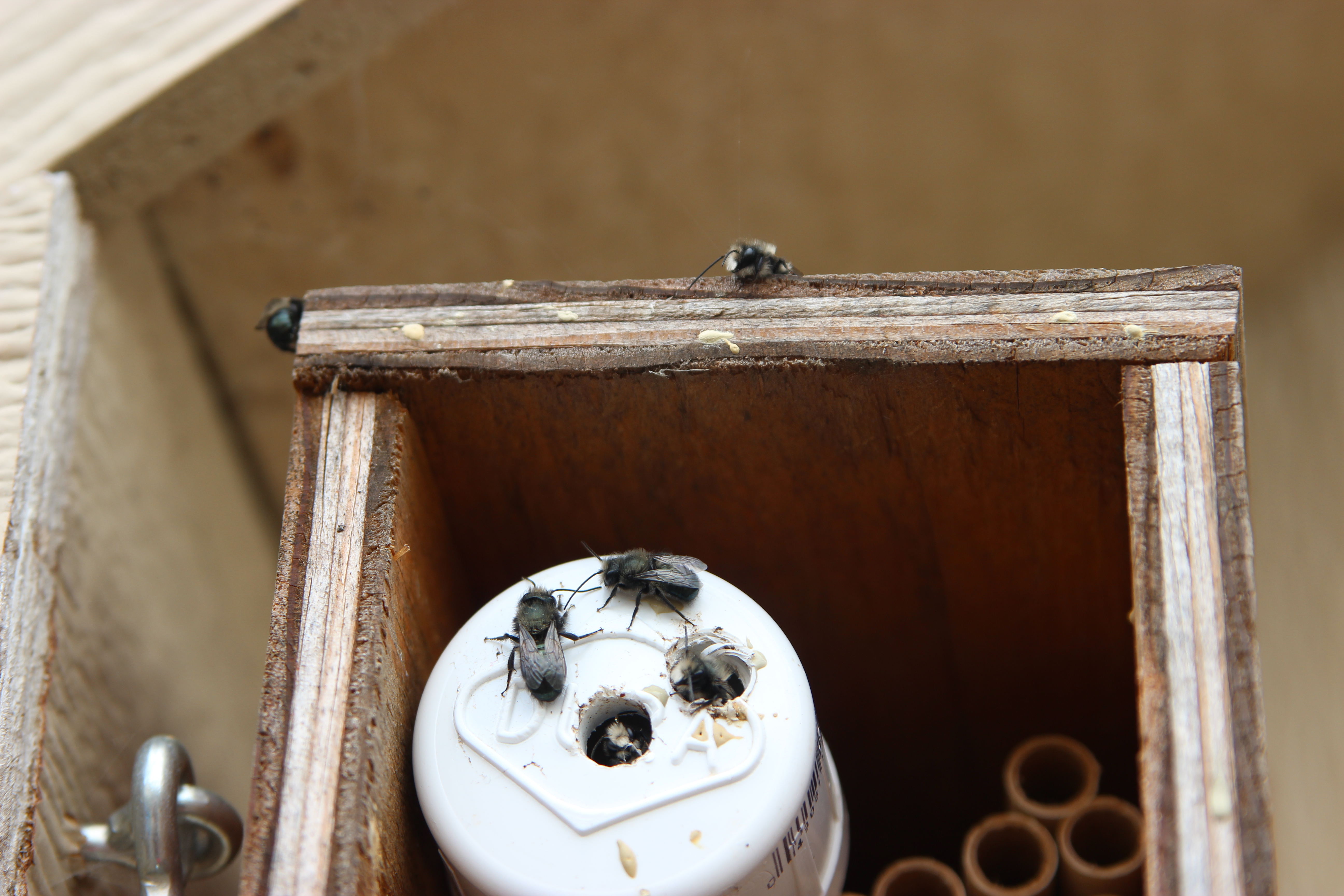Mason Bees:
A fluffy little insect that looks more like a fly than a bee.
A bee that does not make honey, but also doesn’t sting.
Then what is the point?
POLLINATION
We all need it.
There are mason bees in nature, but sometimes that is just not enough. With the amount of crops growing to feed the world’s population, and the amount of bees dying from pesticides, it may be time for more people to keep their own mason bees. This is especially true if you have a garden, or fruit trees. It takes six mason bees to pollinate the same fruit tree that three hundred and sixty honey bees would have to pollinate. This is because of one simple thing, and that is that the mason bee is not distracted with the need to make honey. Mason bees just want to reproduce, and eat. What a good little short life.
The most effective way of keeping mason bees:
First, get a mason bee house. This can be something that is bought at a hardware store, or Amazon. You can also build one yourself with five pieces of wood, and a portion of PVC pipe like in this photo:

Second, fill it with mason bee straws. These are also available for purchase on Amazon, along with other online bee companies.

Third, buy some mason bee cocoons. It is the time of year to put the cocoons out. These can be bought on Craigslist from other local beekeepers, or online through mason bee websites. If you buy them locally, make sure that they look nice, and clean. Put about fifty cocoons in a bee house, and the number should double next year. In this way your bee population can continue to grow.

After the cocoons are put out into the bee house, there is not much more to do than to wait. The bees will return to the bee house that they emerge from. They will lay their eggs in the straws. Next, they will be bring nectar back to their eggs for when they hatch (thus pollinating as they do so). Lastly, the bee will close the straw up with mud. The baby bees will hatch as larvae, fill up on nectar, and then turn into a cocoon all without leaving the tube. Then next spring the process begins all over again.
What you can do to ensure more bees emerge from their cocoons, and at the correct time is to take the tubes out of the bee house in the fall, break them open, and clean the cocoons (more on this in a future post) in order to store them in the crisper of your refrigerator. This makes sure that the bees don’t emerge the first sunny week of spring, and then starve because it isn’t truly spring yet. Keeping these bees is easy, and rewarding so give it a try today.
IF you live locally, consider registering for the mason bee class that I will be teaching in Graham, WA this upcoming Sunday.